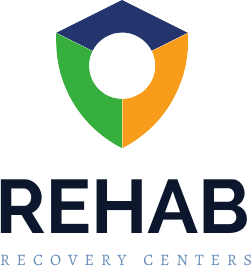Table of Contents
Opioid drugs are some of the most addictive substances out there. With millions of prescriptions written each year and increasing demand for heroin and fentanyl on the streets, the United States is facing an opioid epidemic at unprecedented rates. Even though opioids are effective in treating moderate to severe pain, they are highly addictive and deadly. People suffering from opioid addiction must seek professional help to safely detox and have the support they need to get sober.
Opioids refer to a group of substances that bind to opioid receptors in the brain. These drugs can be man-made or naturally occurring. For example, opium, morphine, and codeine are natural, plant-derived opioids, while synthetic opioids include Percocet, OxyContin, Vicodin, Demerol, and Dilaudid.
These drugs are so addictive and so deadly that nearly 130 people die from an opioid-related overdose every day. Moreover, many people who suffer from prescription opioid addiction end up abusing heroin or stronger illicit opioids later on in life, increasing the risk of overdose.
Opioid withdrawal isn’t an easy process. In fact, it can be so unpleasant that going into withdrawal is one of the primary reasons why people keep using. However, with the help of a medical detox and inpatient rehab program, those suffering from opioid addiction can begin to take back control over their lives.
Causes of Opioid Addiction
Opioids are addictive by nature. Doctors may prescribe opioids for pain after major surgeries or injuries as well as other conditions like chronic pain or cancer. However, when abused, these drugs bind to opioid receptors in the brain and inhibit the production of dopamine, causing a flood of feel-good chemicals that are associated with movement, emotions, and feelings of pleasure. The brain quickly associates the drug with pleasure and opioid addiction can form in less than a week.
Although anyone who abuses opioids is susceptible to addiction, some people are more likely to suffer from opioid use disorder than others. For example, children of opioid-addicted parents are more likely to abuse drugs later on in life. Similarly, factors such as peer pressure, mental health, exposure to trauma, and childhood environment all influence a person’s susceptibility to addiction.
Signs and Symptoms of Opioid Abuse
While under the influence of opioids, you may notice a person has constricted pupils, flushed skin, and impaired judgment. People may fall asleep suddenly or “nod off,” itch their face or arms more often than usual or even have slowed reaction times and breathing rates. Other common signs and symptoms of opioid addiction include:
- Taking opioids in a way other than prescribed
- Buying opioids illegally on the streets
- Doctor shopping, or seeking multiple prescriptions from multiple doctors
- Experiencing changes in mood, sleep patterns, and behaviors
- Lying to friends and family about drug use
- Spending excess money and time on opioids
- Feeling withdrawals when cutting back on opioids or ceasing use
- Neglecting responsibilities
- Poor judgments and risky behaviors
- Isolating from friends and family
If someone is addicted to opioids, it’s crucial to get them help as soon as possible. When someone builds tolerance and takes more and more opioids, they severely increase their risk of overdose. Although overdoses can be reversed, if caught in time, using the life-saving medication, Narcan (Naloxone), opioid overdoses can also be deadly. In the end, the best way to avoid overdose, as well as the other complications that come from opioid addiction, is to seek help from a drug and alcohol rehab center near you. The first step is detox.
Opioid Withdrawal and Detox
People who abuse opioids will quickly develop a tolerance to the drugs. As a result, they will have to take increasing amounts of the substance in order to get high. Tolerance then leads to dependence, where individuals experience withdrawal symptoms if they stop using. These are two tell-tale signs of opioid addiction that should never be ignored. Although not typically life-threatening, opioid withdrawal is an extremely unpleasant experience that often drives people back to the drugs.
Symptoms of opioid withdrawal include:
- Yawning
- Eyes tearing up
- Runny nose
- Muscle aches
- Restlessness
- Insomnia
- Anxiety
- Depression
- Diarrhea
- Abdominal cramps
- Cold sweats and goosebumps
- Dilated pupils
- Rapid heartbeat
- High blood pressure
- Nausea and vomiting
These flu-like symptoms typically begin improving after 72 hours and are easily managed with the help of withdrawal medications, such as buprenorphine. Buprenorphine is an opioid-replacement drug that attaches to opioid receptors and helps reduce withdrawal symptoms. These medications are highly regulated and are usually administered at opioid detox facilities. In addition to withdrawal medications, the staff at detox centers provide 24/7 monitoring and support to ensure the safety and comfort of each patient throughout the detox process.
Opioid Addiction Treatment
The primary treatment used for opioid addiction is medication-assisted treatment (MAT). MAT combines the use of FDA-approved medications and comprehensive behavioral therapy. While the medications hope patients cope with withdrawals and cravings, the therapy helps patients uncover the root causes of their addictions and develop new coping mechanisms.
Depending on the severity of a person’s addiction, some people will attend inpatient rehab while others will attend an outpatient program or a combination of both. During treatment, patients will participate in both individual and group therapies. Opioid rehab programs may also address co-occurring disorders, relapse prevention, 12-step facilitation, and case management to provide patients with the best possible support.
While participating in treatment, some patients will take opioid abuse medications such as Suboxone, Sublocade, Vivitrol, or Naltrexone. When used in combination with behavioral therapies, MAT drugs are highly effective in reducing the risk of relapse and improving treatment retention rates.
Find Help for Opioid Abuse Today
There are a variety of treatment options available for opioid addiction – so you don’t have to do this alone. At Rehab Recovery Centers, we’re dedicated to connecting those who are struggling with the most trusted drug and alcohol rehab programs across the nation. To speak with an addiction specialist about finding an opioid rehab center near you, contact us today.
Get Help Today
Don’t go through the process of recovery alone. There are people who can help you with the struggle you’re facing. Get in touch with one today.

